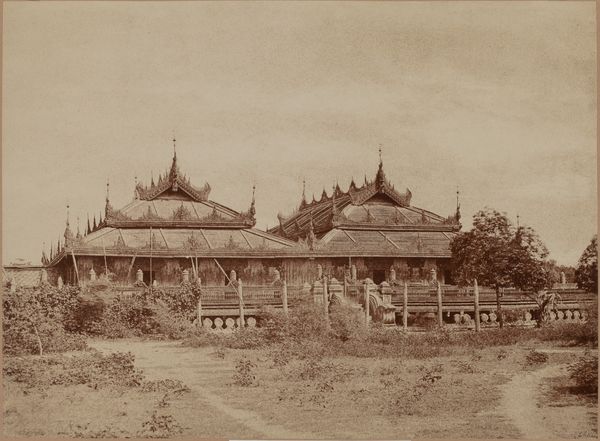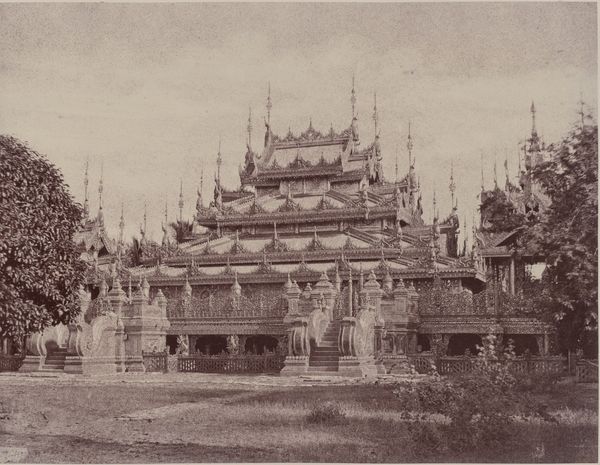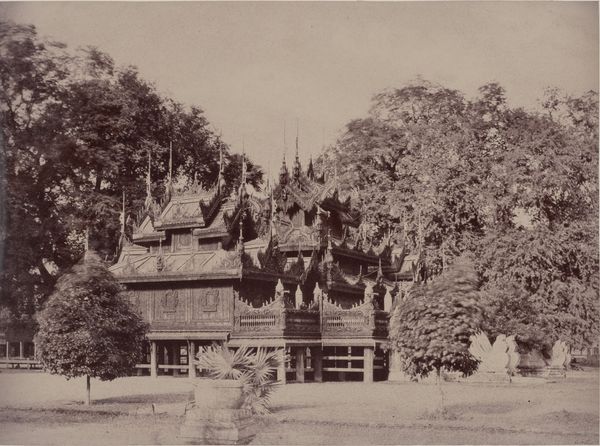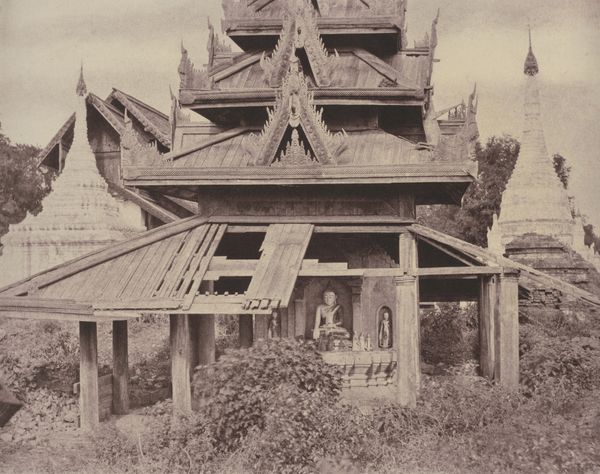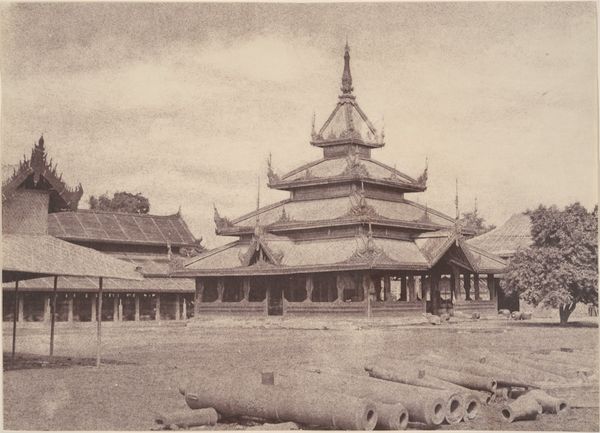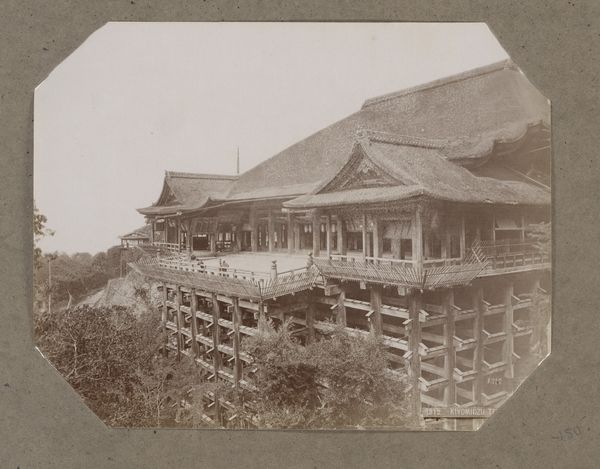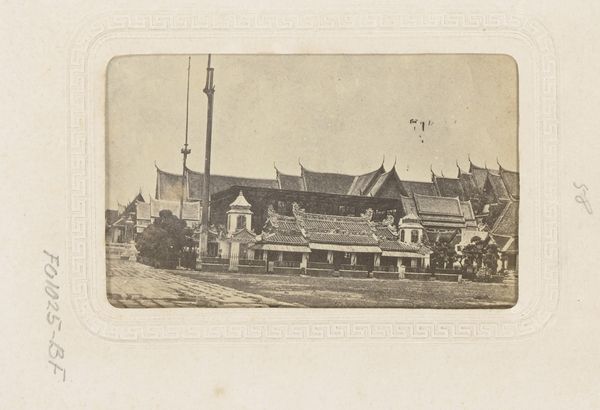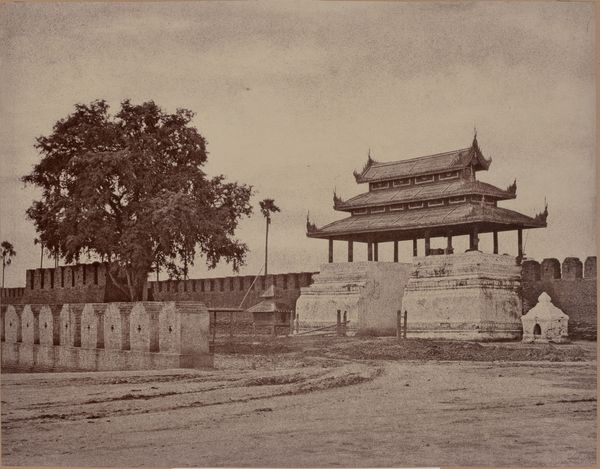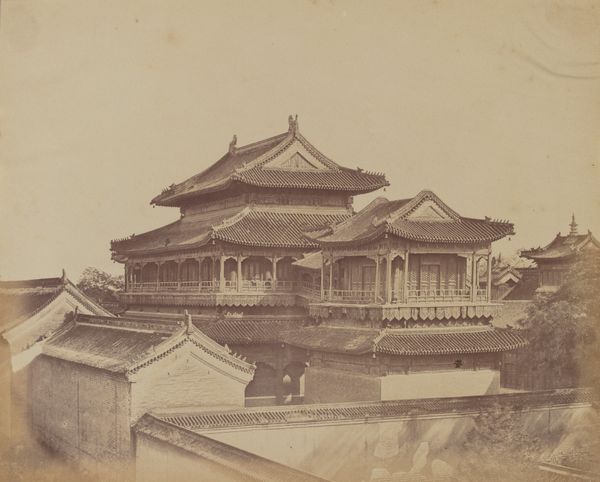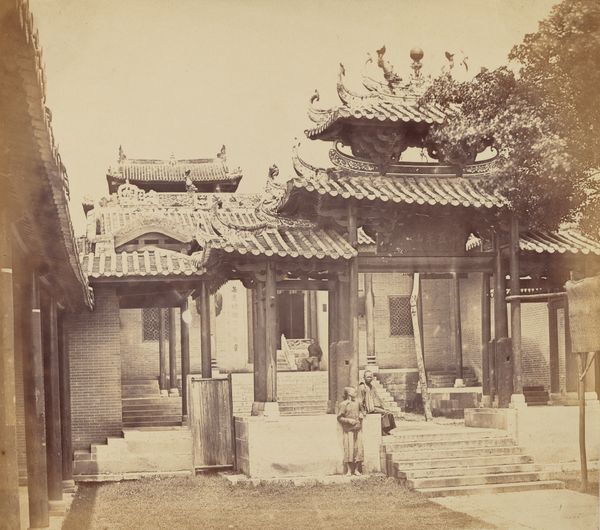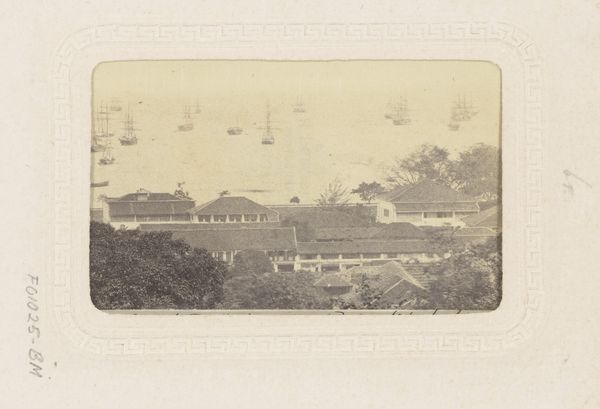
photography, site-specific, albumen-print, architecture
#
asian-art
#
landscape
#
photography
#
site-specific
#
albumen-print
#
architecture
Dimensions: image: 24.3 × 34.4 cm (9 9/16 × 13 9/16 in.) mount: 45.5 × 58.3 cm (17 15/16 × 22 15/16 in.)
Copyright: National Gallery of Art: CC0 1.0
Linnaeus Tripe made this photograph of the Magwe Wundouk Kyoung monastery in Amerapoora, Burma, using the laborious wet collodion process. To create this image, a glass plate would have been coated with a sticky, light-sensitive emulsion right before exposure in the camera. This process required portable darkrooms and meticulous timing, making photography in the field a real challenge. The warm sepia tone and soft focus are products of the collodion chemistry, giving the detailed architecture a dreamlike quality. The way Tripe framed the building shows how the structural elements and careful construction of the monastery create a sense of stability and order, reflecting the social and spiritual values it represented. Considering Tripe's approach, we see that photography, like any craft, relies on specific materials and methods. Recognizing this, it encourages us to appreciate the choices and expertise that shape not only photographs but many other forms of creative expression.
Comments
No comments
Be the first to comment and join the conversation on the ultimate creative platform.
